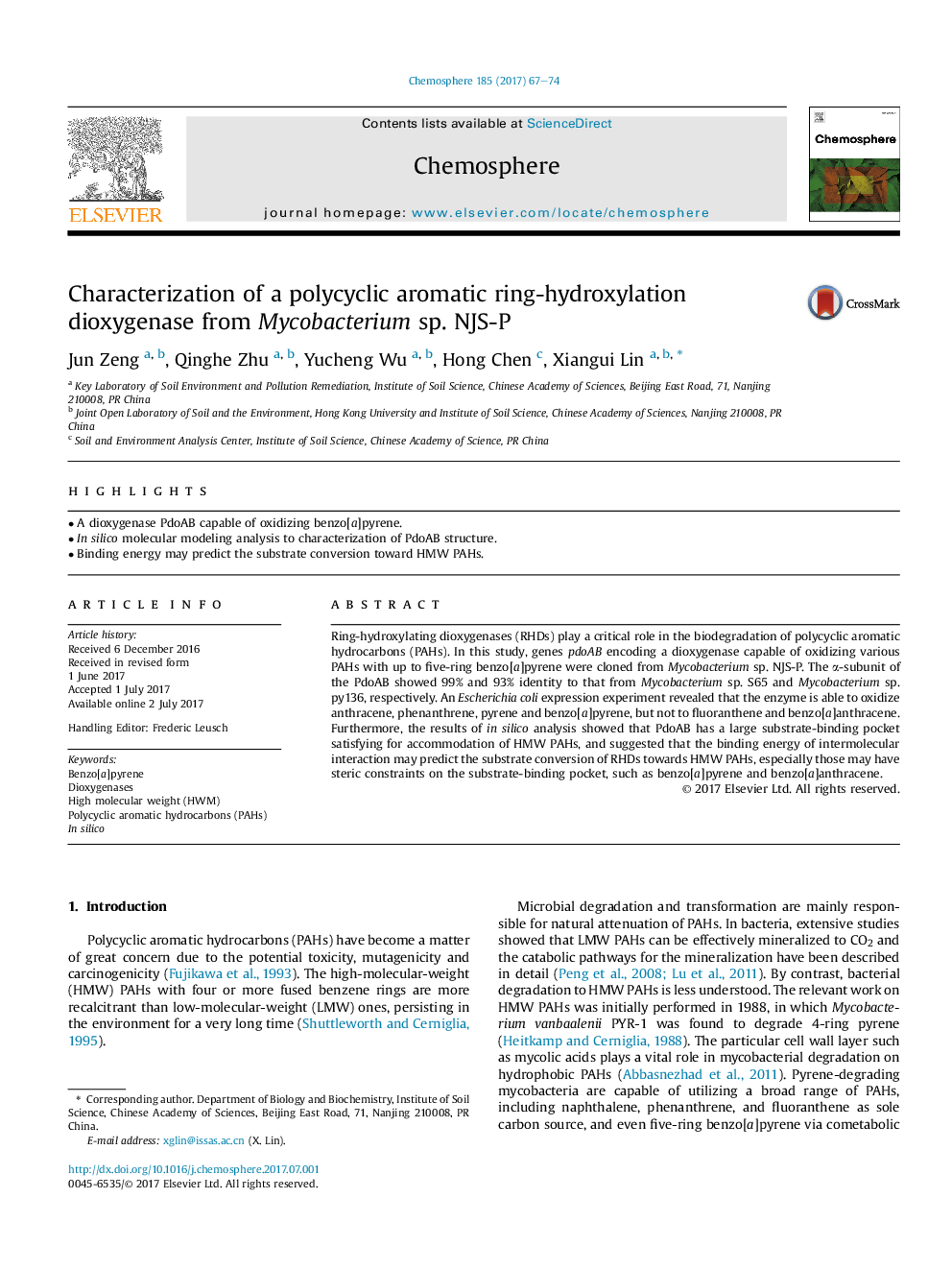| Article ID | Journal | Published Year | Pages | File Type |
|---|---|---|---|---|
| 5746685 | Chemosphere | 2017 | 8 Pages |
â¢A dioxygenase PdoAB capable of oxidizing benzo[a]pyrene.â¢In silico molecular modeling analysis to characterization of PdoAB structure.â¢Binding energy may predict the substrate conversion toward HMW PAHs.
Ring-hydroxylating dioxygenases (RHDs) play a critical role in the biodegradation of polycyclic aromatic hydrocarbons (PAHs). In this study, genes pdoAB encoding a dioxygenase capable of oxidizing various PAHs with up to five-ring benzo[a]pyrene were cloned from Mycobacterium sp. NJS-P. The α-subunit of the PdoAB showed 99% and 93% identity to that from Mycobacterium sp. S65 and Mycobacterium sp. py136, respectively. An Escherichia coli expression experiment revealed that the enzyme is able to oxidize anthracene, phenanthrene, pyrene and benzo[a]pyrene, but not to fluoranthene and benzo[a]anthracene. Furthermore, the results of in silico analysis showed that PdoAB has a large substrate-binding pocket satisfying for accommodation of HMW PAHs, and suggested that the binding energy of intermolecular interaction may predict the substrate conversion of RHDs towards HMW PAHs, especially those may have steric constraints on the substrate-binding pocket, such as benzo[a]pyrene and benzo[a]anthracene.
